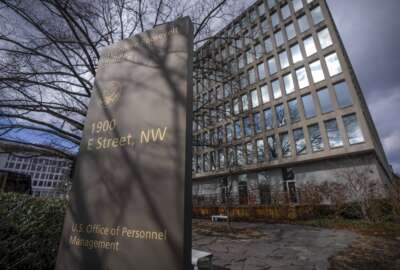In some sense, federal agencies have been modernizing their information technology systems even since they installed the first punch card reader. In contemporary times, though, modernization is driven not only by the continuous advances in technology, but also by the need to control costs and deliver state-of-the-art services.
One important strategy for better-performing, more efficient systems is automation, and the driving of automation deeper and deeper into the process that make up an agency’s mission delivery. That’s according to at least one expert on modern approaches to modernization: Rob Smallwood, the senior director for Digital Modernization at GDIT.
“For any new modernizations that you’re bringing to your environment,” Smallwood said, “you should incorporate the necessary automations as part of that solution.” He makes the distinction between legacy applications that sought to automate manual, paper processes and an automation-first mindset needed today.
“We take an approach … of automate everywhere it makes sense,” he added.
Smallwood said federal modernization efforts nowadays must start with the mission and the basic question of priorities. Agencies must determine, among the hundreds of systems they might typically operate, where to start first. Decisions may rest on cost, obsolescence, or where agencies need to improve customer service.
For example, an agency might be running equipment that is aging and soon out of warranty. Or its software might be increasingly vulnerable in a cybersecurity sense.
It’s also important to establish baseline performance metrics for applications and services, Smallwood said. Then make careful inventories of all the components that make up a system. That will enable faster pinpointing of the sources of performance shortfalls, and therefore where to focus modernization efforts.
Inventories are no trivial matter, Smallwood said.
“One of the first things we do we try to do in an environment is inventory everything that’s there,” he said. “And then correlate all that underlying infrastructure up to what are the capabilities and services actually being provided to the users. From there, you can actually start to monitor and get an enterprise view across to really understand where something might be degraded, or where some anomalies might be coming from that could impact performance.”
An integrator like GDIT can aid agency IT staffs with best of breed sets of tools to help them avoid the costs and uncertainty of big coding projects when automating various functions into new applications.
“Today, you have tools like UiPath, or Live Objects or other vendors, even ServiceNow and BMC, that have those capabilities built in” Smallwood said. These tools abstract all of the underlying coding that might be required, enabling functional managers to arrange objects without having to understand coding.
This leads to the importance of an overarching governance model for automation and the modernization it supports, Smallwood said. “You don’t want to stifle or cause bottlenecks in the automation being created. You want to empower everyone at all levels to be able to automate, and enable them to do their job more effectively and efficiently.” That’s possible when multifunctional teams exist within a governance framework for modernization.
Another advantage of working modernization through an integrator, Smallwood said, is that it lets an agency offload the risk of dealing with emergent vendors who possess innovative technology but might have an unproven performance record.
“We can help navigate those obstacles to better enable federal agencies to take advantage of these emergent technologies and vendors,” he said.
Finally, Smallwood advises, it’s wise for agencies to borrow a page from the agile approach to software development and apply it to automation projects. That is, working incrementally.
He said, “Almost every project that we take on, we work within sprints, working incrementally to move the ball forward.”
You really have to have a good understanding of what the mission is, and what the users require to be successful. From there, you figure out how it can actually enable that success. It requires you to do a little bit at a time, because agency are not all the same. There's not one size fits all to the agencies.
Rob Smallwood
Senior Director, Digital Modernization, GDIT
Automation and Modernization
One thing you don't want to do from a bureaucratic perspective, is to stifle or cause bottlenecks in the automation being created. Because at the end of the day, you want to be able to empower everyone at all levels to be able to automate, and enable them to do their job more effectively and efficiently.
Rob Smallwood
Senior Director, Digital Modernization, GDIT
The Role of Systems Integrators in Modernization
I think we're just starting to scratch the surface of where AI can be applied within our environments. Whether it's being used to do natural language processing, like with the service desk automated assistant; or whether you're using it to automatically establish service baselines in your environment.
Rob Smallwood
Senior Director, Digital Modernization, GDIT
Listen to the full show:
Copyright
© 2024 Federal News Network. All rights reserved. This website is not intended for users located within the European Economic Area.








